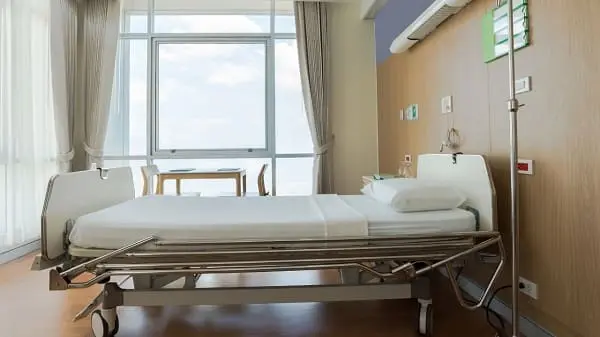Closed Bed Making in Nursing: Principles & Procedures
The unoccupied bed in a hospital is known as a "closed bed," and it will remain such until a new patient is admitted. The top coverings are positioned in such a way that the entire bed, including the sheets, is completely enclosed, hence the name "closed bed making."
Closed Bed Making Principles

Below are some of the most important guidelines for closed bed preparation in a medical facility:
- Make ready for a new patient's admission by providing a comfortable bed.
- The goal is to provide a spotless and rejuvenating space.
- To make a positive impression
- So as to lessen the transmission of disease
Things required for closed bed making
- Bed
- Bed spread
- Pillow cases
- Blanket
- Draw sheet
- Rubber draw sheet
- Two big sheets
- Bucket for keeping dirty linen
- Duster
=> Also Read: Occupied Bed Making in Nursing: Purpose, Procedure, Precautions
Purpose of Closed Bed Making
- In addition to making the bed, making the patient's unit seems more organized.
- Cleanliness and hygiene are improved by the act of making a bed.
- Making the patient's bed improves the aesthetic appeal of their room.
- Assuring Clients' Happiness
- To give the patient a place to sleep where he or she feels secure and comfortable
- To improve the ward's overall presentation
- Treat the patient medically
- To avoid developing pressure ulcers while lying in bed
- One reason is also to encourage tidy living.
- To encourage both active and passive motion in the patient
- Establishing a strong bond between the nurse and the client.
- Keeping an eye on customers, making sure their space is always spotless, and ensuring their health and safety are all top priorities.
- The goal of the closed bed-making service is to ensure every one of our patrons has a clean, safe, and pleasant place to sleep each night.
- Client requirements must be taken into account.
Procedure for Closed Bed Making
A patient who's already spent the most of their time in bed due to illness may appreciate a tidy, clean, and comfortable sleeping space. While making a hospital bed in a closed room, the following protocols must be followed:
- Always use proper hand hygiene before and after working with a patient's bed.
- Gather everything that is needed at the bedside of the patient.
- Blanket, draw sheet, top sheet, mackintosh, & bottom sheet should be laid out on the chair, and the bed should be securely locked.
- Keep your back from hurting by lowering bed to a more comfortable height.
- Put on some protective gloves and toss your dirty sheets and pillowcases in the hamper.
- Don't forget to put the pillows on the chair by your bed.
- Be sure to dust and vacuum the mattress.
- Flip the bed over, either from head to toe or side to side.
- A mattress that has been slid down the bed must be pulled all the way to the top of the bed.
- You should open and spread the bottom sheet over the mattress, positioning the centre fold in the middle of the bed.
- Get it all the way under the bed & along the side you're on.
- The mackintosh should be positioned 18 inches below the bed's head end.
- Tuck in one edge of the draw sheet and lay it over the mackintosh.
- Tuck in the sheets on the other side of the bed.
- The top sheet should be centered on the bed. The mattress cover must be provided free of charge.
- Follow the same procedures for applying the blanket if you are using it. About 6 inches of space is recommended between the edge and the top of the mattress. Smoothly tuck blanket below the mattress, mitering the corner.
- The patient's neck won't get scratched up if you put the cushion down so the open end faces away from the door.
- Put the sufferer at ease by lowering the bed and locking the wheel.
- Place the call bell within the patient's reach and return furniture to its rightful place.
- Remove filthy and dirty bedding from the room & place it in the washing pail.
- If you want to stop an infection from spreading, take off your gloves and wash your hands.
